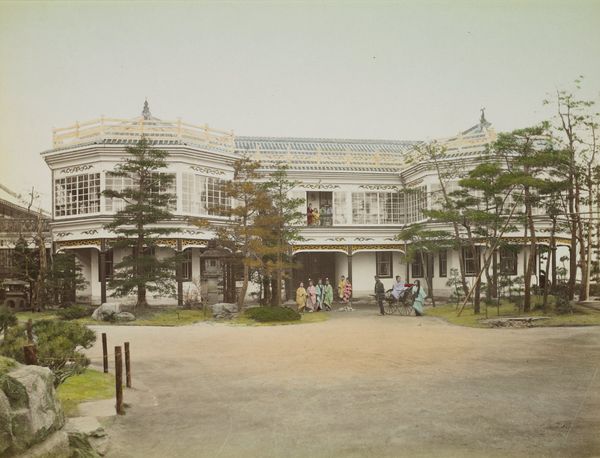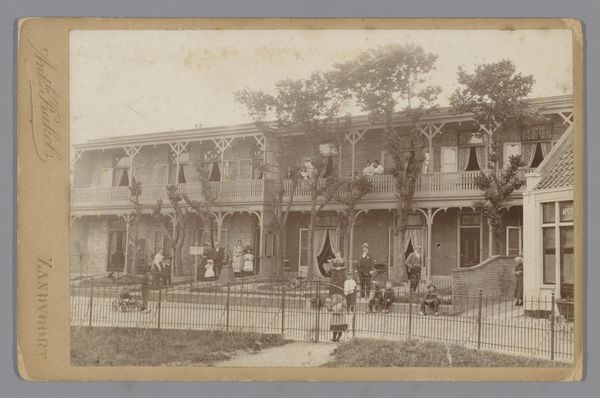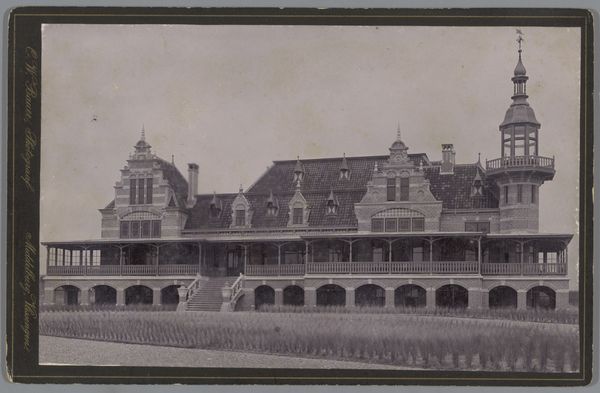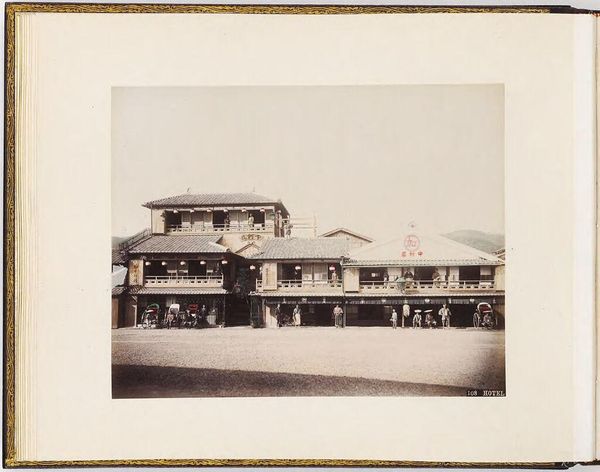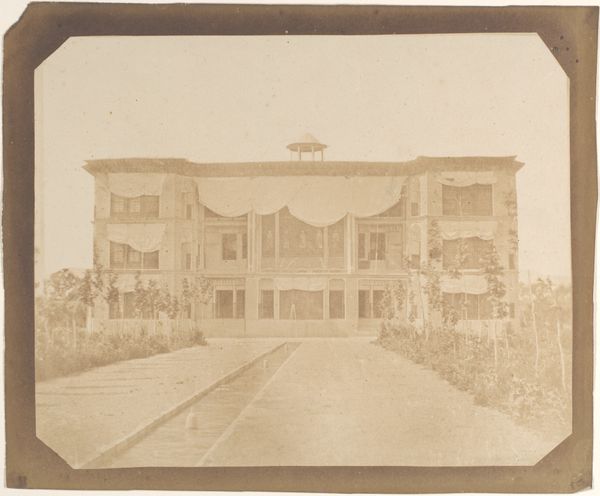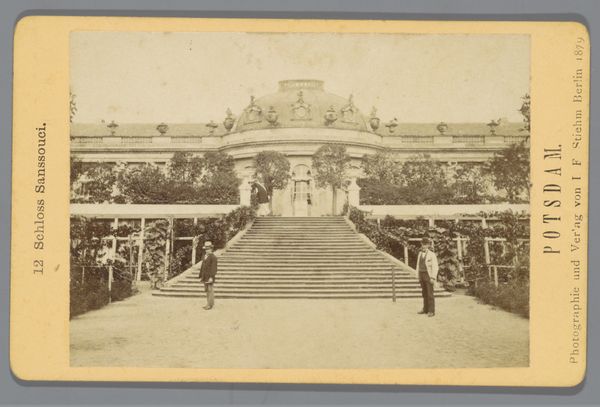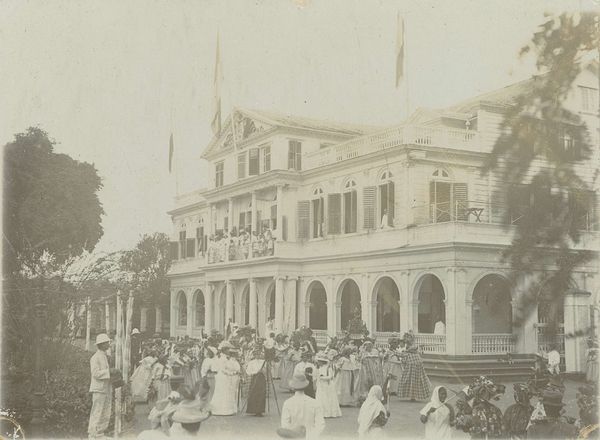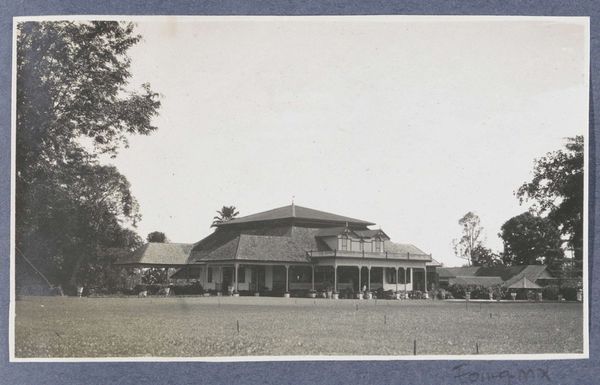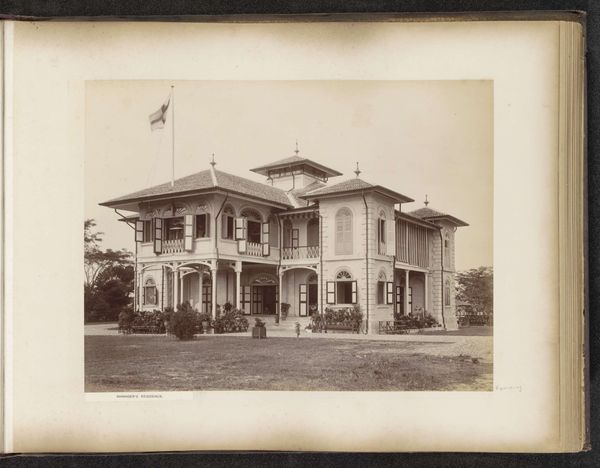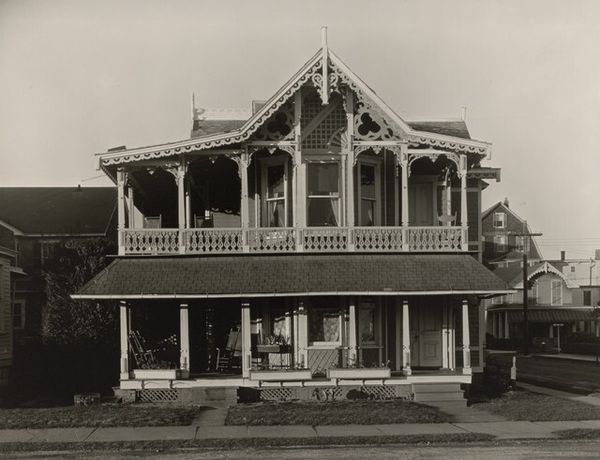
Dimensions: 19.6 x 26.1 cm (7 11/16 x 10 1/4 in.) mount: 28 x 33 cm (11 x 13 in.)
Copyright: CC0 1.0
Curator: This is Kusakabe Kimbei’s "Grand Hotel, Yokohama," a hand-colored albumen print, though the exact date is unknown. Look at that building, what is your first thought? Editor: It’s imposing, a statement of colonial power rendered in delicate hues. There's an evident tension between the opulence of the architecture and the labor implied by the rickshaws. Curator: Precisely. The Grand Hotel was a symbol of Western influence in Japan during the Meiji era. It catered to wealthy foreigners and served as a key site of cultural exchange and, indeed, cultural dominance. Editor: And the hand-coloring process itself is so fascinating. It speaks to a meeting of technologies and skills, of photographic chemistry meeting traditional painting practices. The manual labor involved adds another layer to its meaning. Curator: Absolutely. Consider, too, the role of photography in shaping perceptions of Japan at the time, especially through works like these that often romanticized or exoticized the East for Western audiences. Editor: It's interesting to consider the consumption of this image as well – the market for such prints, the narratives they perpetuated and how those narratives impacted Japanese society. Curator: Reflecting on this image, it's crucial to confront how spaces like the Grand Hotel and representations like this photograph became integral to an uneven global power dynamic. Editor: Indeed, investigating the image's materiality and considering its social and historical use gives us insight into this complex moment of exchange and imposition.
Comments
No comments
Be the first to comment and join the conversation on the ultimate creative platform.
